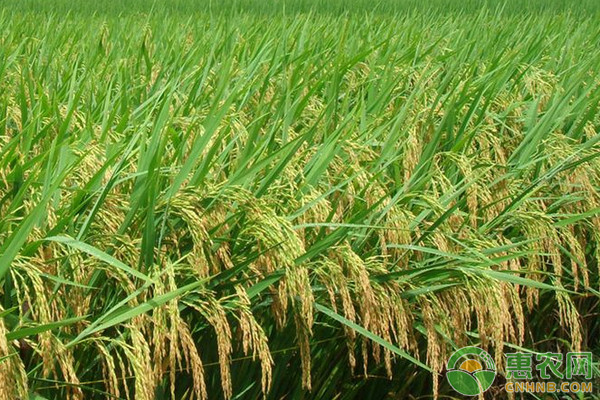Nowadays, the symbiotic ecological breeding model is very popular, such as rice prawn symbiosis, japonica rice co-production, frog rice co-production, etc. This farming mode can not only ensure rice yield but also increase the yield of another animal. Let's take a look at the experimental model of indica rice co-culture in Jialan Farm, Jiangshu Village, Xushe Town, Yixing City, Jiangsu Province in 2017. 1. Rice field preparation The surrounding environment of the paddy field, which is co-produced by japonica rice, should be non-polluting and not affected by the irrigation of other paddy fields. It should be installed separately into the drainage ditch system, and the drainage port should be sealed with a mesh to prevent the escape of jaundice and the entry of enemy organisms. Each paddy field covers an area of ​​15 mu. The surrounding trenches are excavated around the rice fields. The width of the ditch is 1.5 meters and the depth is 0.8 meters. Anti-escape facilities are installed around the paddy fields. Second, rice sowing The rice variety was selected as “Nanjing 46â€. The variety belongs to the mid-maturing late japonica rice variety, and the rice tastes soft and smooth, and the taste quality is excellent. In the middle and late May, the seedlings were planted, 0.75 kilograms of rice seeds per mu, and transplanted in the middle and late June, and planted reasonably, with a plant spacing of 30 cm × 13 cm. Third, the scutellaria stocking Introduced a large-scale parent-grown Astragalus membranaceus seedling from Suzhou. The seedling stocking time is in mid-August, the seeding amount is 10 kg/mu, and the specification is 25/kg. Fourth, daily management 1. Astragalus bait feeding The choice of bait is mainly based on the breeding and breeding of the self-prepared pool. The live sputum is placed at a fixed position in the ring groove. According to the ecological habits of the yellow scorpion, it is mainly in the evening. 2. Water quality control in the ring Astragalus and rice live together in an environment, and water quality regulation should take into account the living habits of Astragalus membranaceus according to the production needs of rice. Plant the submerged plant Myriophyllum spicatum in the ring ditch, and regularly apply water quality improver to regulate the water quality, ensure the water quality of the ditch is refreshed, and reduce the disease of jaundice. Deepen the water level during the hot season to facilitate the growth of jaundice. 3. Daily management of rice fields In the prevention and control of pests and diseases, the first is to use low-toxic and high-efficiency pesticides that are safe for jaundice and solar insecticidal lamps to remove insects. The second is to use the water pressure method to adjust the water level of the ring ditch to play a role in inhibiting the occurrence of rice pests and diseases. At the same time, weeds and diseased plants are removed manually in time. In order to maintain the excellent taste quality of Nanxun 46, organic fertilizer is mainly used for many years, and the annual organic fertilizer consumption is 150 kg/mu. 4. patrolling against escape Insist on the field every morning and evening, check the water quality of the ditch, and the integrity of the anti-flood facilities of the drainage outlets, especially in the case of bad weather, but also strengthen inspections, but also prevent the invasion of the enemy. 5. Harvesting and capturing After the rice matures in mid-November, the rice is harvested by machine. After the rice is harvested, the water is drained from the ditch and collected and collected for sale. Sixth, benefit analysis Cost aspect The cost is 4,000 yuan/mu, including 1000 yuan for Astragalus seedlings, 2,000 yuan for rice seeds, fertilizers, and alfalfa, and 1,000 yuan for other (hydropower, labor, etc.). 2. Production value and output The output value is 7,200 yuan/mu, of which 20 kg/mu of Astragalus membranaceus, the output value is 3,200 yuan/mu; the rice is 400 kg/mu, and the output value is 4,000 yuan/mu. 3. The profit per mu reached 3,200 yuan, and the ratio of input to output was 1:1.8. Seven, summary The co-cultivation model of japonica rice is a production mode that makes full use of the combination of paddy fields. Rice can provide habitat for the growth of Astragalus membranaceus. In summer, the high temperature plays a role in sunshade cooling, and the rice field is rich in natural feed for the feeding of Astragalus. At the same time, during the growth process, Astragalus membranaceus drilled holes in the field and ingested a variety of field pests, greatly reducing rice pests and diseases. Therefore, the rice produced by this model can reach the green pollution-free standard, and the processed rice price is about 8 times that of ordinary rice, and the benefit is good. At the same time, the scutellariae cultured in this mode is mainly based on self-cultivating and breeding cockroaches. The growth rate is slow, but the meat quality is good, the taste is delicious, and the price is high. It is very popular among consumers and is in short supply. Source: "Scientific Fish Farming" Author: Liu Yingfei Mao Ying Yeh Mady WSP/Premix/Powder/Growth Promtor Wsp/Premix/Powder/Growth Promtor,Huang Lian Detoxification Powder,Anti-Phlogistic Powder,Qingwen Dudu Powder Sichuan Aibang Weiye Biological Engineering Co., Ltd. , https://www.aibangpharm.com

